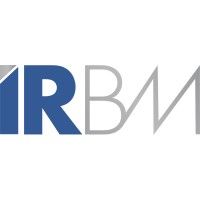预约演示
更新于:2025-05-07
CGAS
更新于:2025-05-07
基本信息
别名 2'3'-cGAMP synthase、C6orf150、cGAMP synthase + [5] |
简介 Nucleotidyltransferase that catalyzes the formation of cyclic GMP-AMP (2',3'-cGAMP) from ATP and GTP and plays a key role in innate immunity (PubMed:21478870, PubMed:23258413, PubMed:23707061, PubMed:23707065, PubMed:23722159, PubMed:24077100, PubMed:24116191, PubMed:24462292, PubMed:25131990, PubMed:26300263, PubMed:29976794, PubMed:30799039, PubMed:31142647, PubMed:32814054, PubMed:33273464, PubMed:33542149, PubMed:37217469, PubMed:37802025). Catalysis involves both the formation of a 2',5' phosphodiester linkage at the GpA step and the formation of a 3',5' phosphodiester linkage at the ApG step, producing c[G(2',5')pA(3',5')p] (PubMed:28214358, PubMed:28363908). Acts as a key DNA sensor: directly binds double-stranded DNA (dsDNA), inducing the formation of liquid-like droplets in which CGAS is activated, leading to synthesis of 2',3'-cGAMP, a second messenger that binds to and activates STING1, thereby triggering type-I interferon production (PubMed:28314590, PubMed:28363908, PubMed:29976794, PubMed:32817552, PubMed:33230297, PubMed:33606975, PubMed:35322803, PubMed:35438208, PubMed:35460603, PubMed:35503863). Preferentially recognizes and binds curved long dsDNAs of a minimal length of 40 bp (PubMed:30007416). Acts as a key foreign DNA sensor, the presence of double-stranded DNA (dsDNA) in the cytoplasm being a danger signal that triggers the immune responses (PubMed:28363908). Has antiviral activity by sensing the presence of dsDNA from DNA viruses in the cytoplasm (PubMed:28363908, PubMed:35613581). Also acts as an innate immune sensor of infection by retroviruses, such as HIV-2, by detecting the presence of reverse-transcribed DNA in the cytosol (PubMed:23929945, PubMed:24269171, PubMed:30270045, PubMed:32852081). In contrast, HIV-1 is poorly sensed by CGAS, due to its capsid that cloaks viral DNA from CGAS detection (PubMed:24269171, PubMed:30270045, PubMed:32852081). Detection of retroviral reverse-transcribed DNA in the cytosol may be indirect and be mediated via interaction with PQBP1, which directly binds reverse-transcribed retroviral DNA (PubMed:26046437). Also detects the presence of DNA from bacteria, such as M.tuberculosis (PubMed:26048138). 2',3'-cGAMP can be transferred from producing cells to neighboring cells through gap junctions, leading to promote STING1 activation and convey immune response to connecting cells (PubMed:24077100). 2',3'-cGAMP can also be transferred between cells by virtue of packaging within viral particles contributing to IFN-induction in newly infected cells in a cGAS-independent but STING1-dependent manner (PubMed:26229115). Also senses the presence of neutrophil extracellular traps (NETs) that are translocated to the cytosol following phagocytosis, leading to synthesis of 2',3'-cGAMP (PubMed:33688080). In addition to foreign DNA, can also be activated by endogenous nuclear or mitochondrial DNA (PubMed:28738408, PubMed:28759889, PubMed:31299200, PubMed:33031745, PubMed:33230297). When self-DNA leaks into the cytosol during cellular stress (such as mitochondrial stress, SARS-CoV-2 infection causing severe COVID-19 disease, DNA damage, mitotic arrest or senescence), or is present in form of cytosolic micronuclei, CGAS is activated leading to a state of sterile inflammation (PubMed:28738408, PubMed:28759889, PubMed:31299200, PubMed:33031745, PubMed:33230297, PubMed:35045565). Acts as a regulator of cellular senescence by binding to cytosolic chromatin fragments that are present in senescent cells, leading to trigger type-I interferon production via STING1 and promote cellular senescence (By similarity). Also involved in the inflammatory response to genome instability and double-stranded DNA breaks: acts by localizing to micronuclei arising from genome instability (PubMed:28738408, PubMed:28759889). Micronuclei, which are frequently found in cancer cells, consist of chromatin surrounded by their own nuclear membrane: following breakdown of the micronuclear envelope, a process associated with chromothripsis, CGAS binds self-DNA exposed to the cytosol, leading to 2',3'-cGAMP synthesis and subsequent activation of STING1 and type-I interferon production (PubMed:28738408, PubMed:28759889). Activated in response to prolonged mitotic arrest, promoting mitotic cell death (PubMed:31299200). In a healthy cell, CGAS is however kept inactive even in cellular events that directly expose it to self-DNA, such as mitosis, when cGAS associates with chromatin directly after nuclear envelope breakdown or remains in the form of postmitotic persistent nuclear cGAS pools bound to chromatin (PubMed:31299200, PubMed:33542149). Nuclear CGAS is inactivated by chromatin via direct interaction with nucleosomes, which block CGAS from DNA binding and thus prevent CGAS-induced autoimmunity (PubMed:31299200, PubMed:32911482, PubMed:32912999, PubMed:33051594, PubMed:33542149). Also acts as a suppressor of DNA repair in response to DNA damage: inhibits homologous recombination repair by interacting with PARP1, the CGAS-PARP1 interaction leading to impede the formation of the PARP1-TIMELESS complex (PubMed:30356214, PubMed:31544964). In addition to DNA, also sense translation stress: in response to translation stress, translocates to the cytosol and associates with collided ribosomes, promoting its activation and triggering type-I interferon production (PubMed:34111399). In contrast to other mammals, human CGAS displays species-specific mechanisms of DNA recognition and produces less 2',3'-cGAMP, allowing a more fine-tuned response to pathogens (PubMed:30007416). |
分析
对领域进行一次全面的分析。
登录
或

Eureka LS:
全新生物医药AI Agent 覆盖科研全链路,让突破性发现快人一步
立即开始免费试用!
智慧芽新药情报库是智慧芽专为生命科学人士构建的基于AI的创新药情报平台,助您全方位提升您的研发与决策效率。
立即开始数据试用!
智慧芽新药库数据也通过智慧芽数据服务平台,以API或者数据包形式对外开放,助您更加充分利用智慧芽新药情报信息。
生物序列数据库
生物药研发创新
免费使用
化学结构数据库
小分子化药研发创新
免费使用



